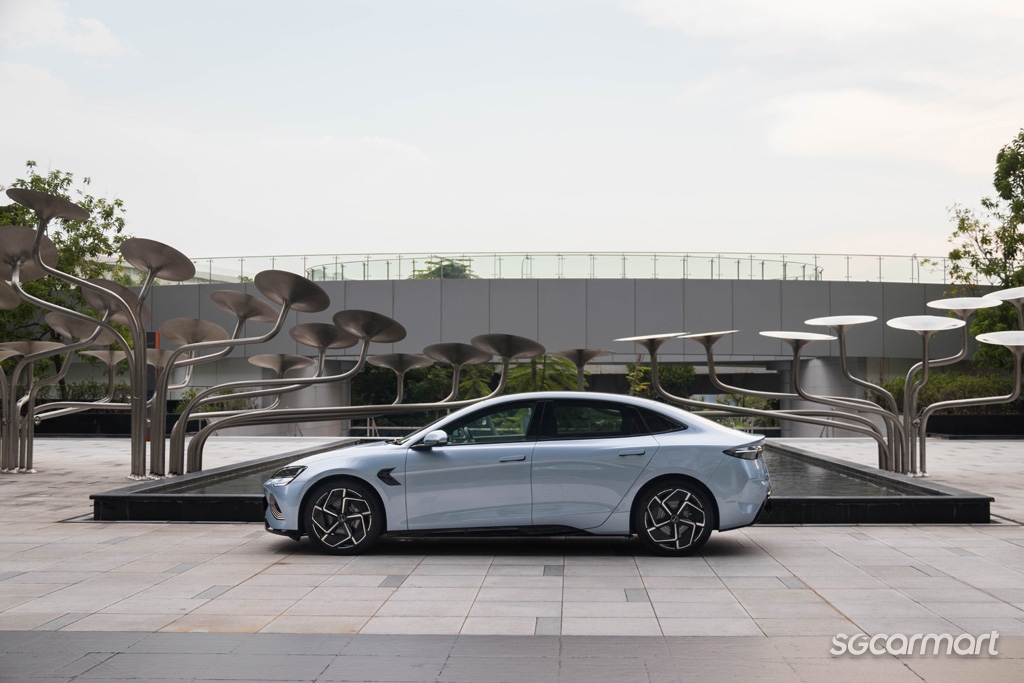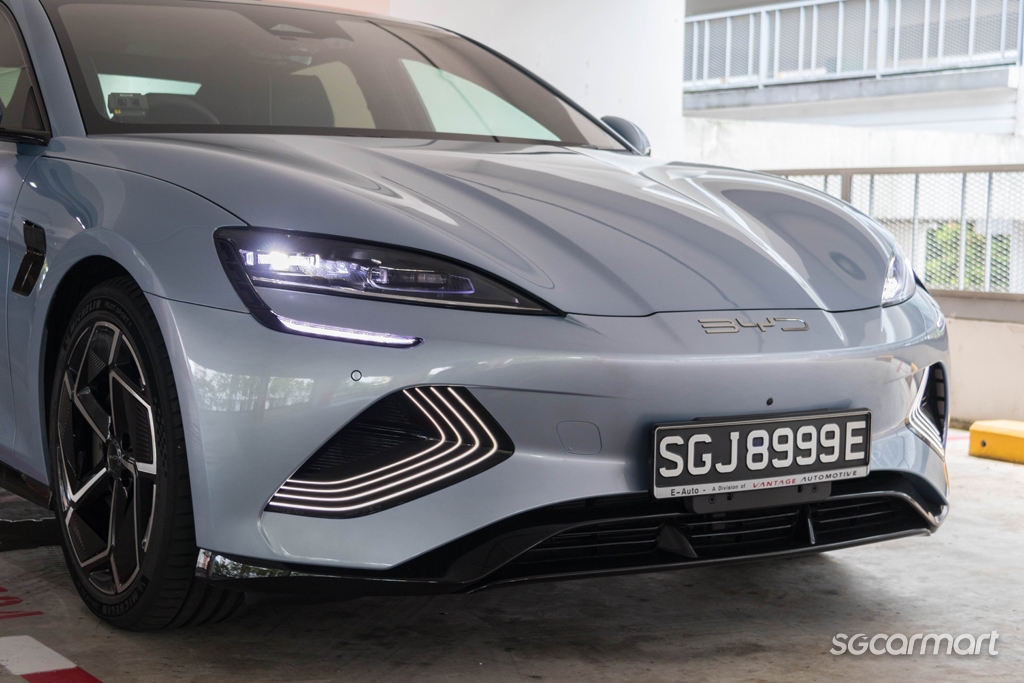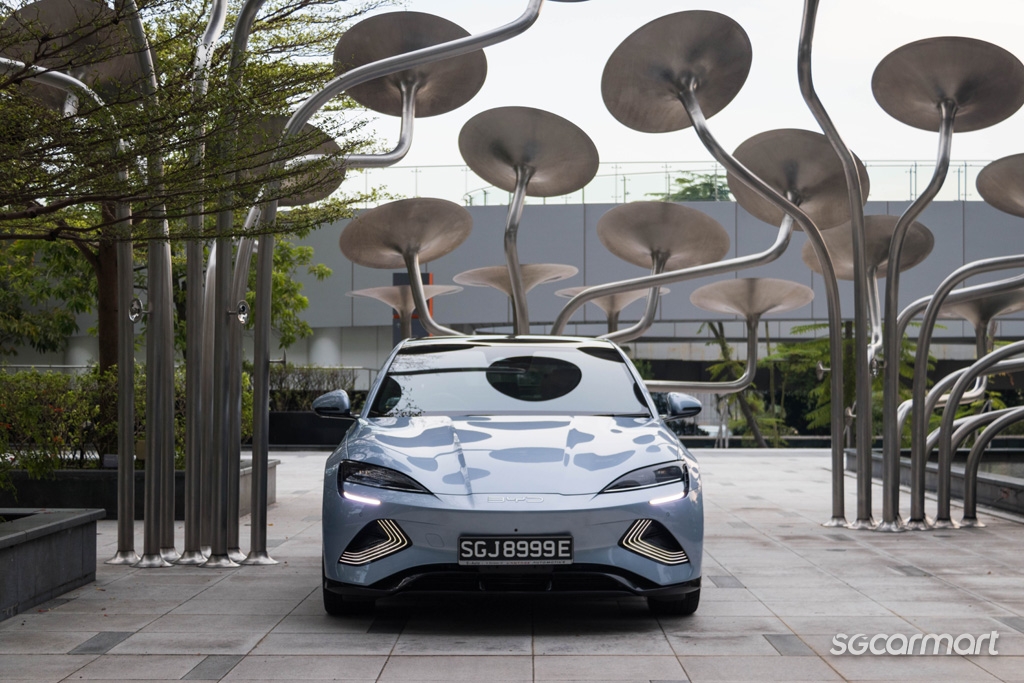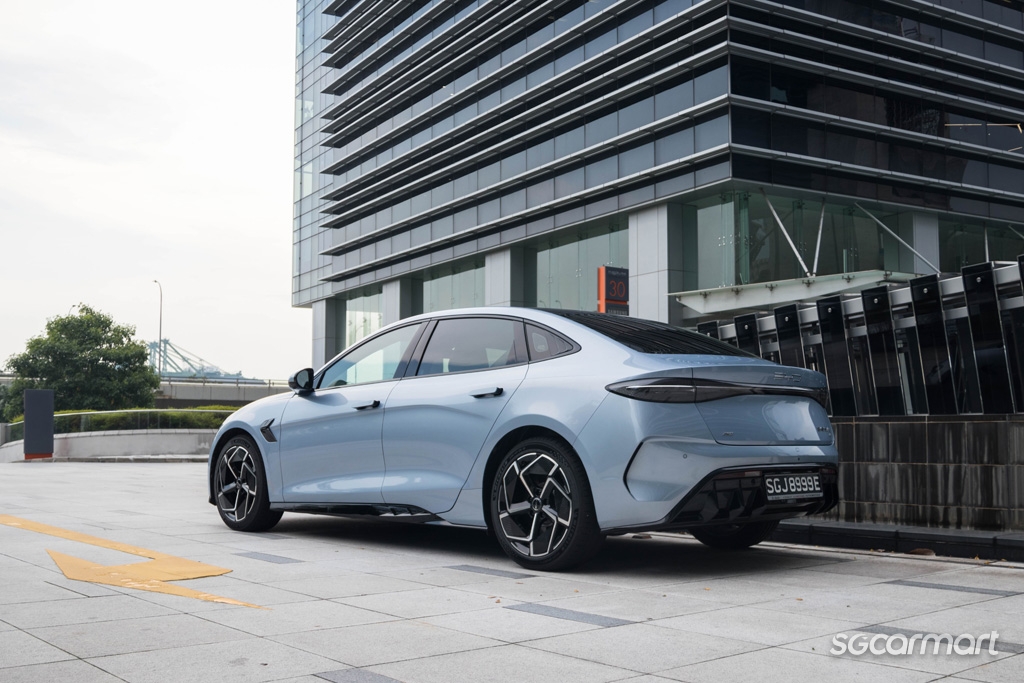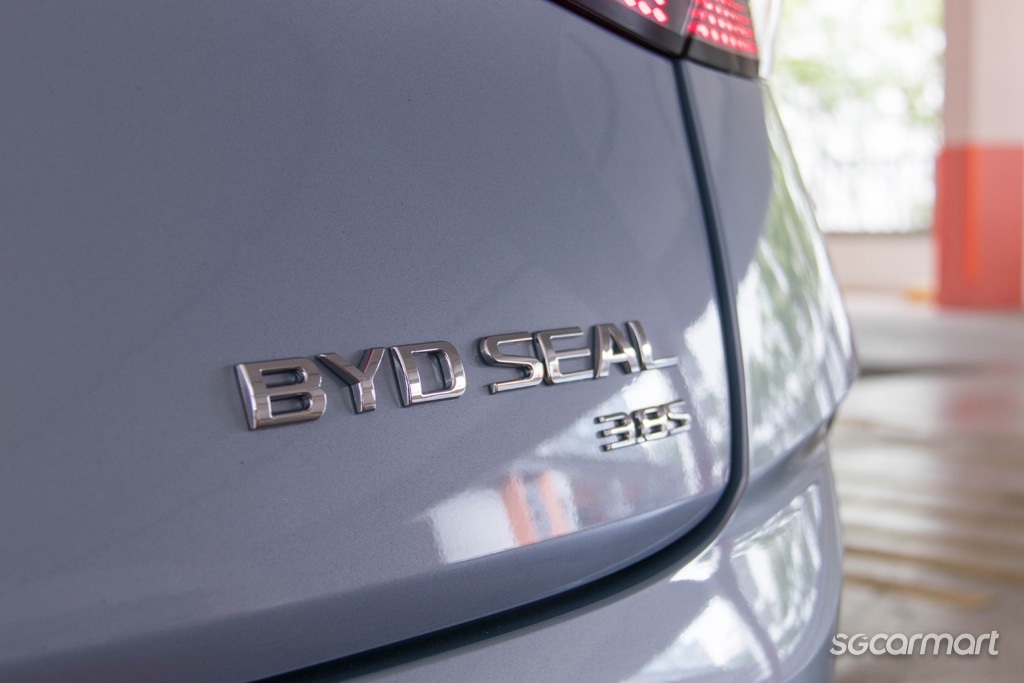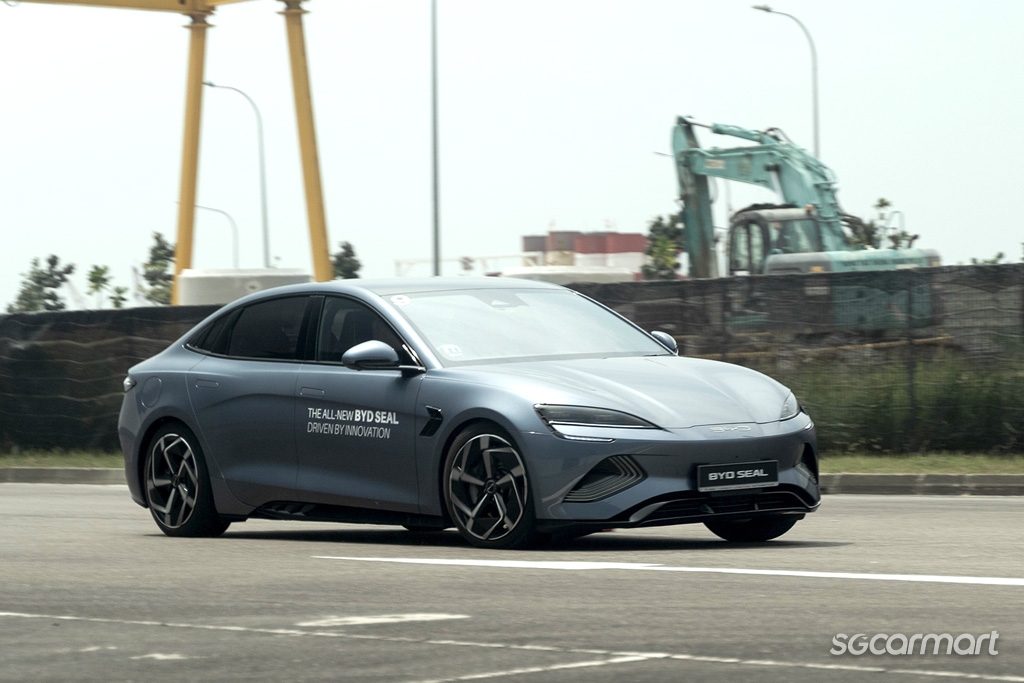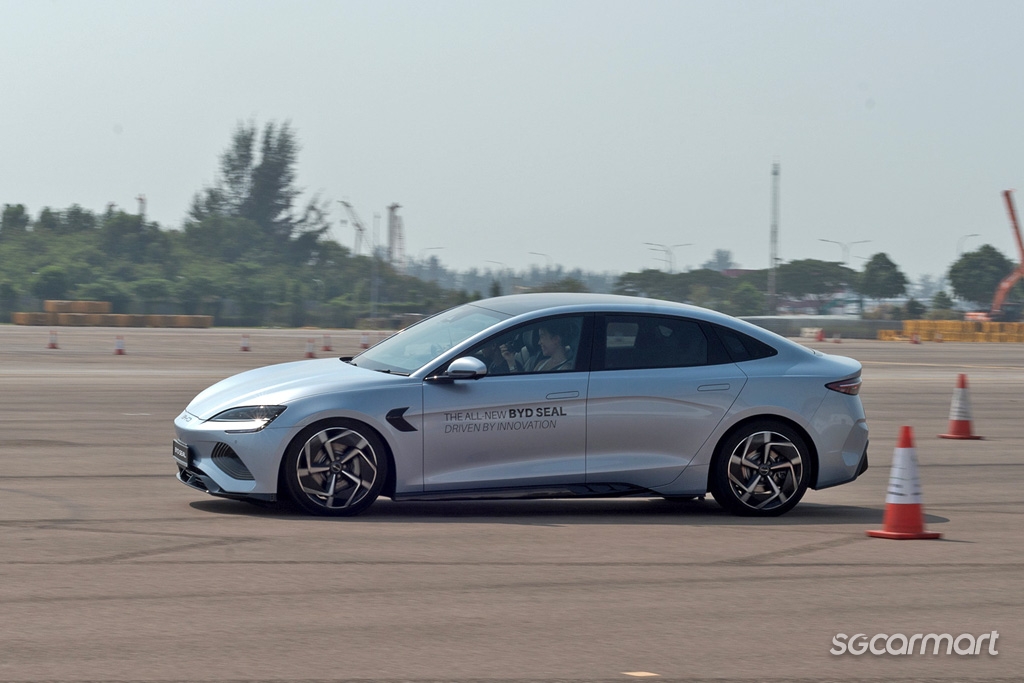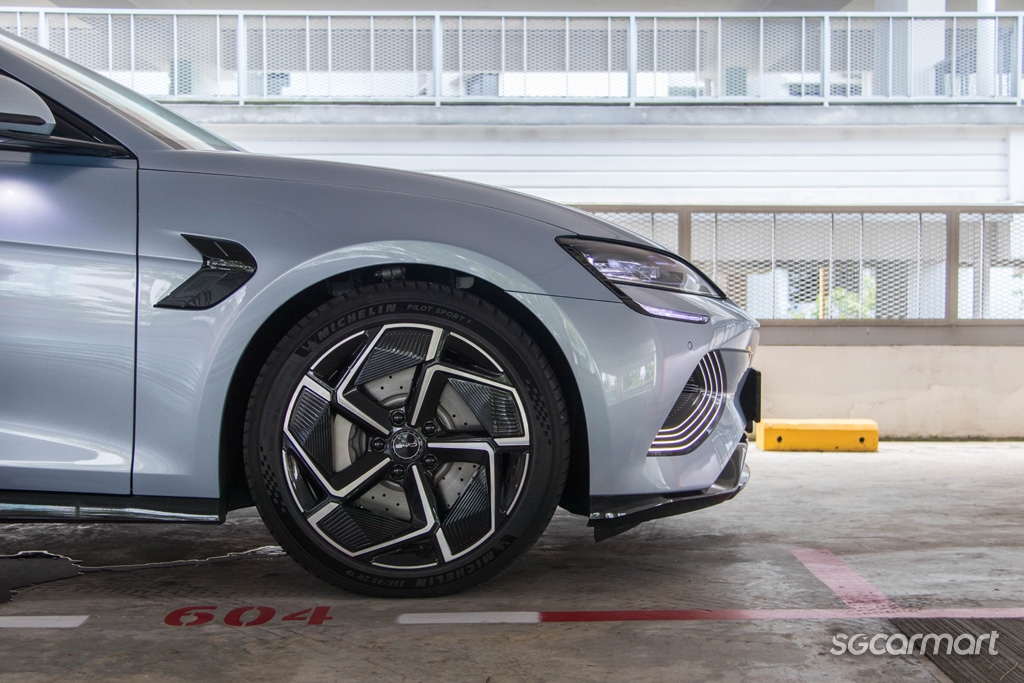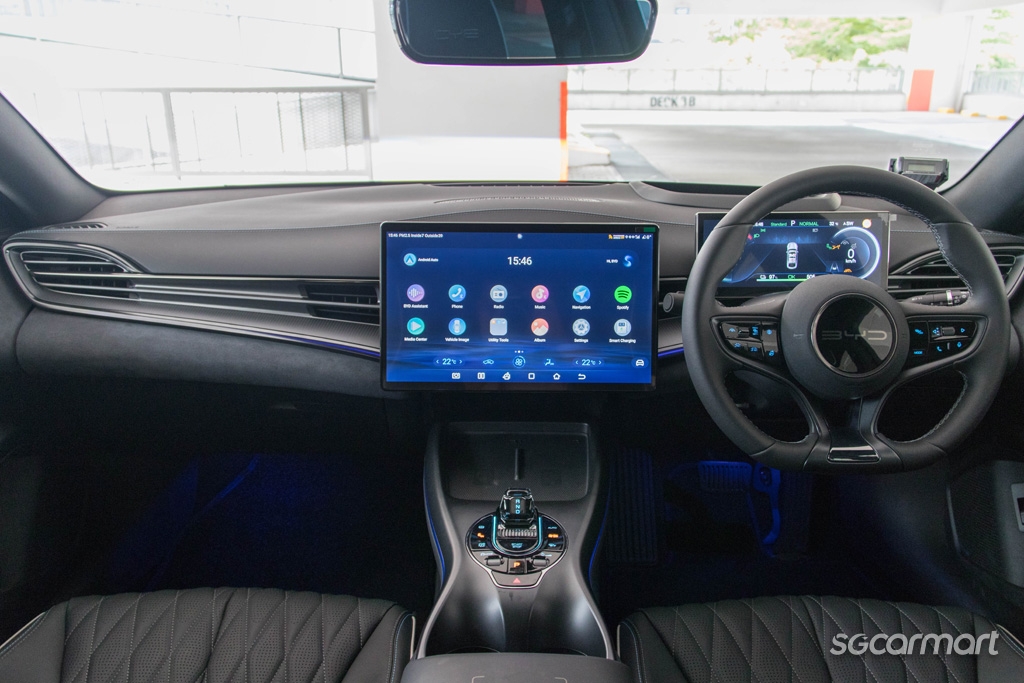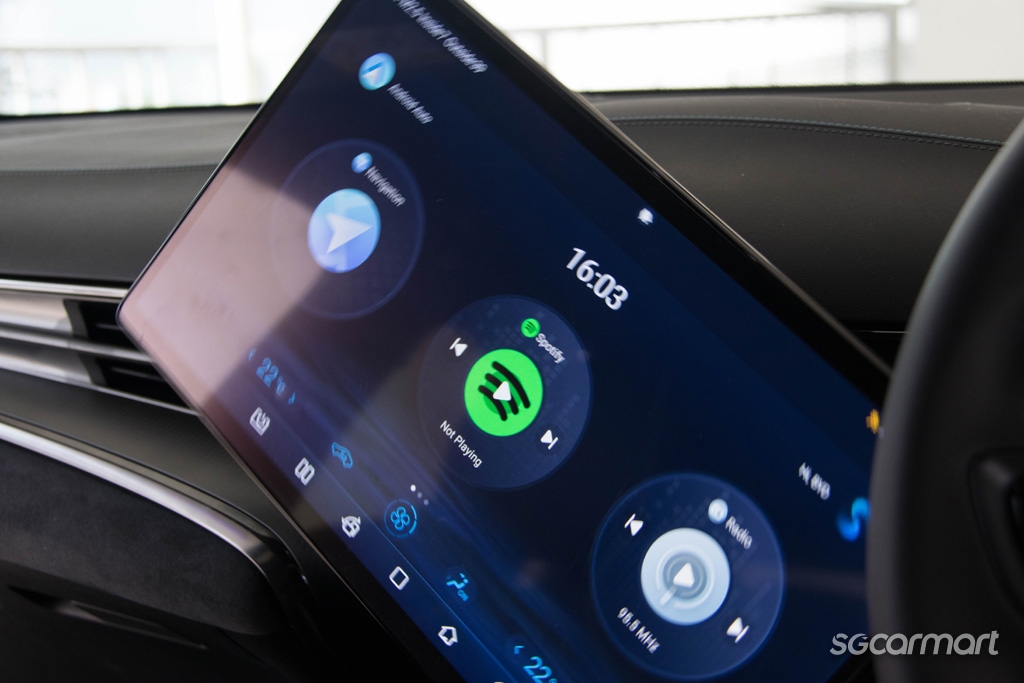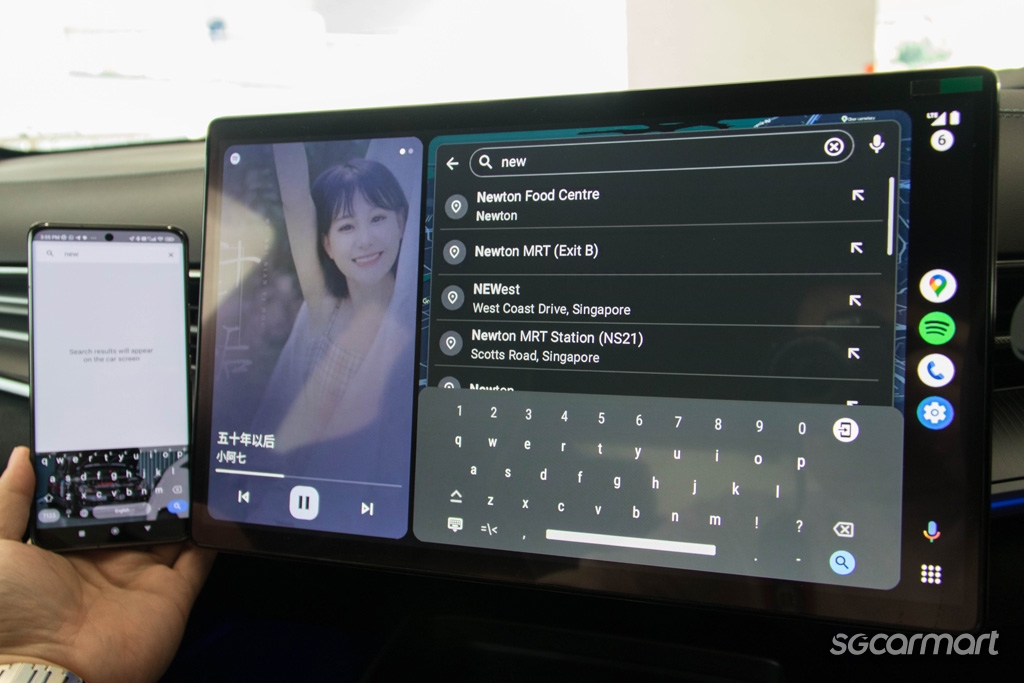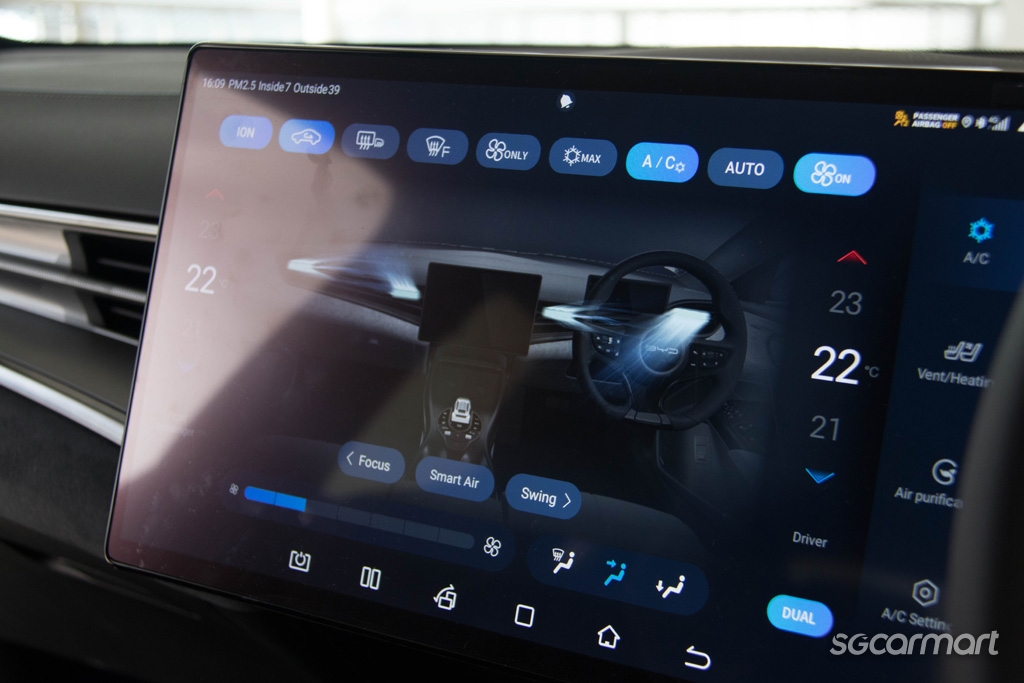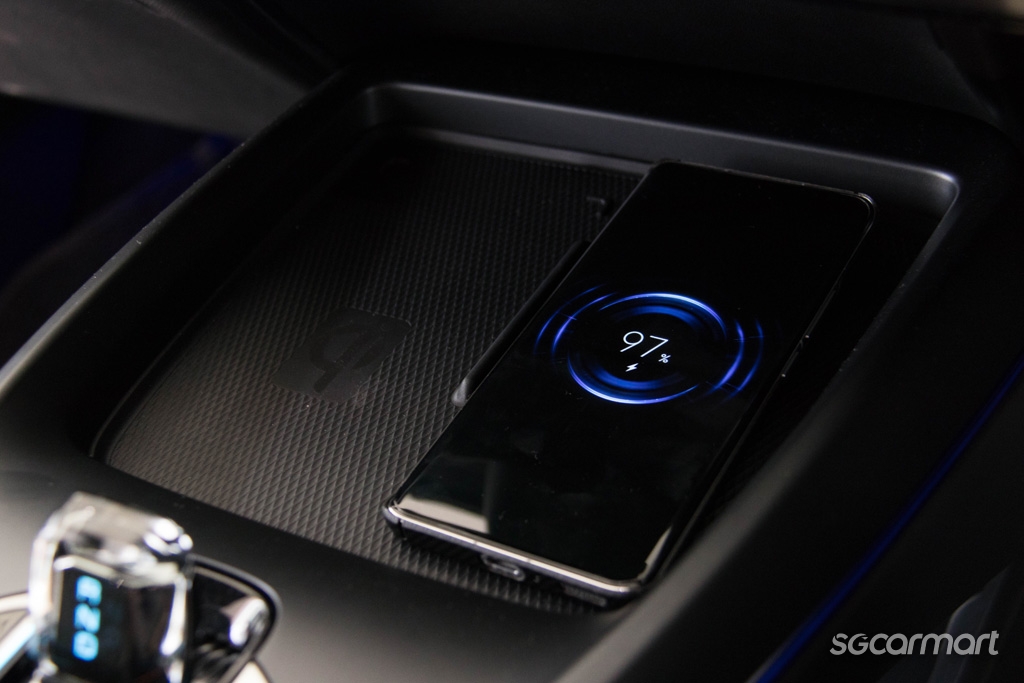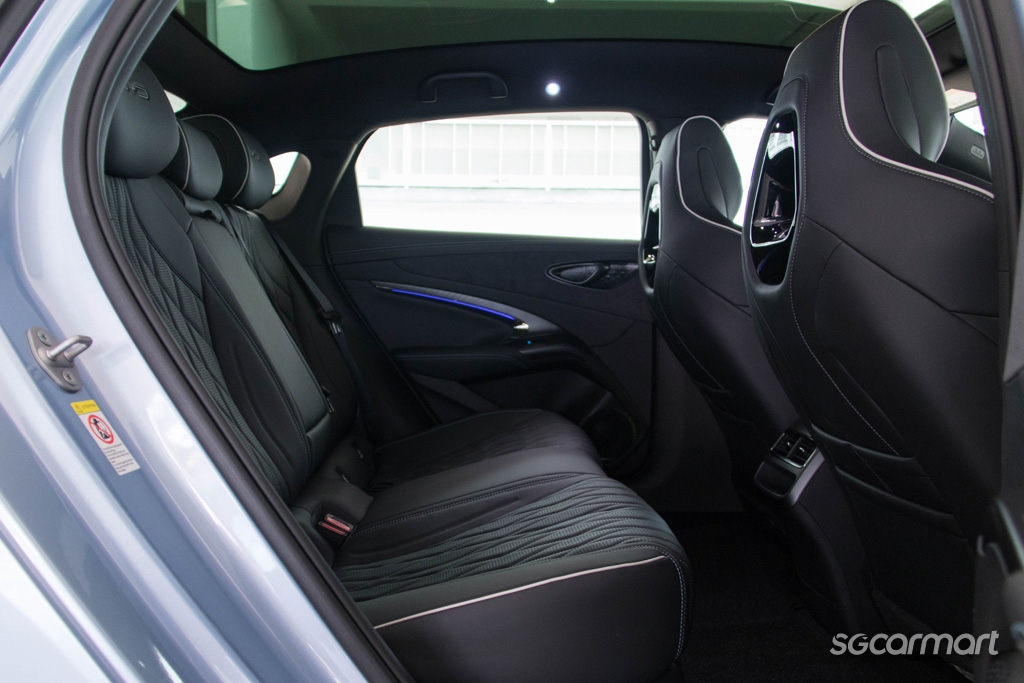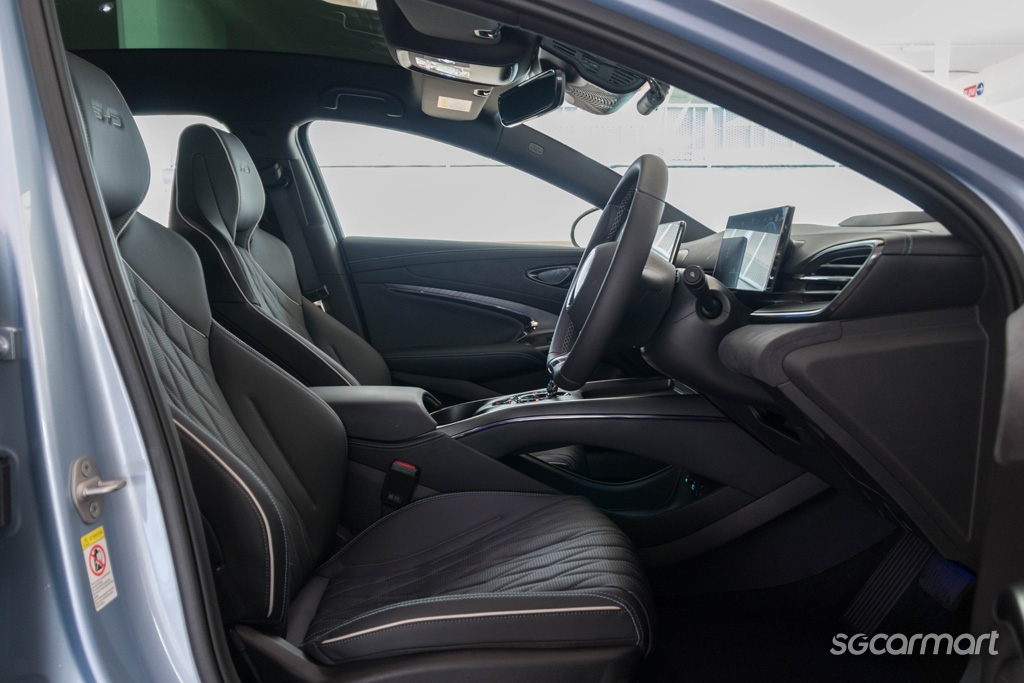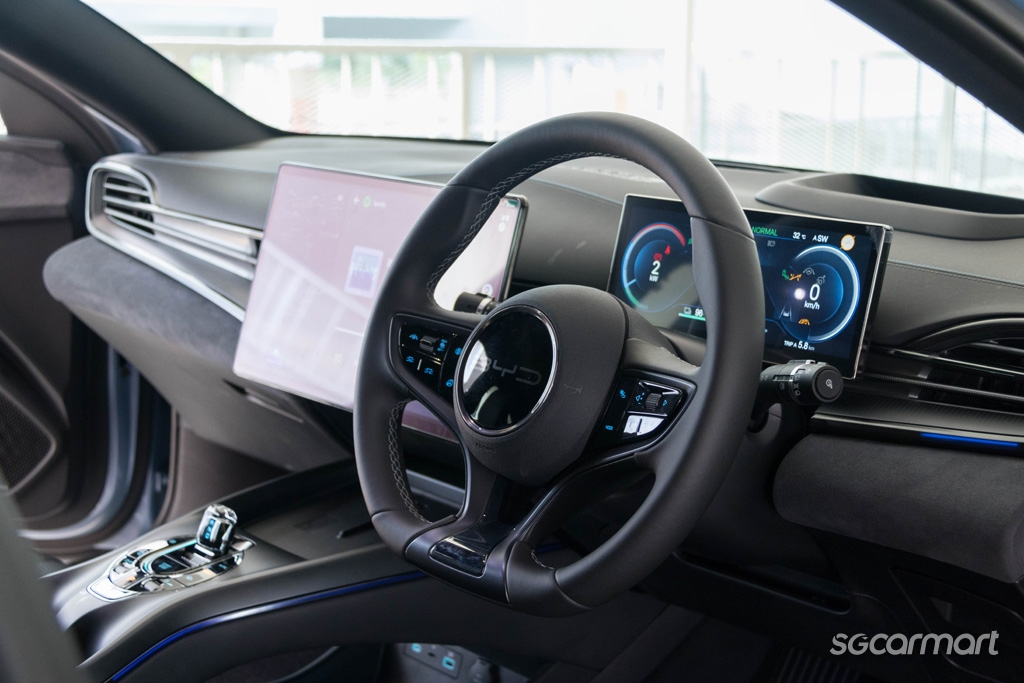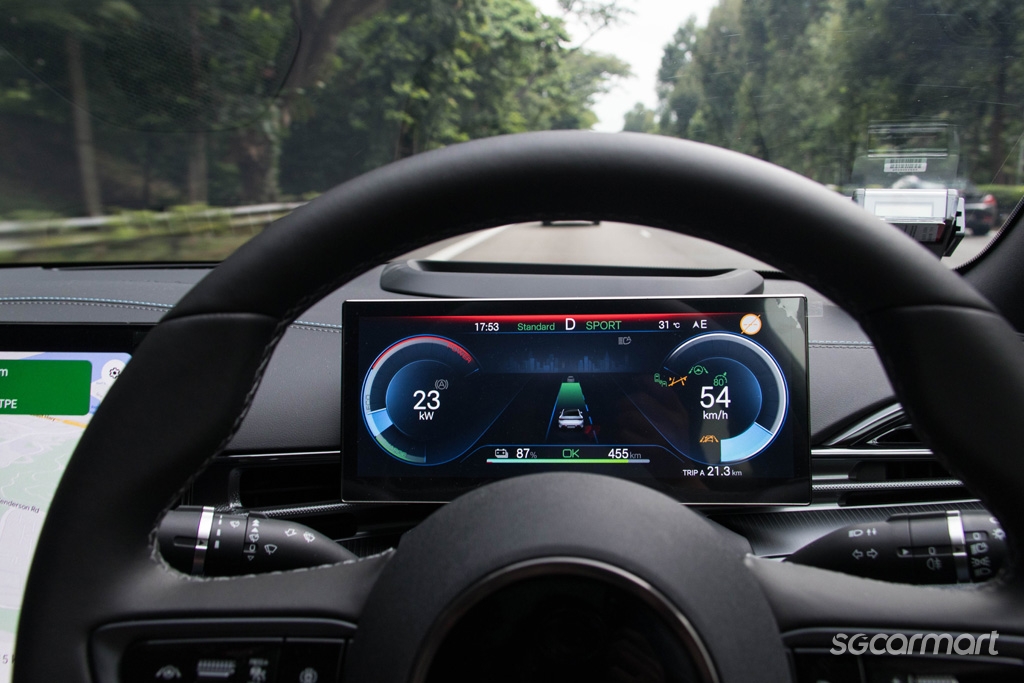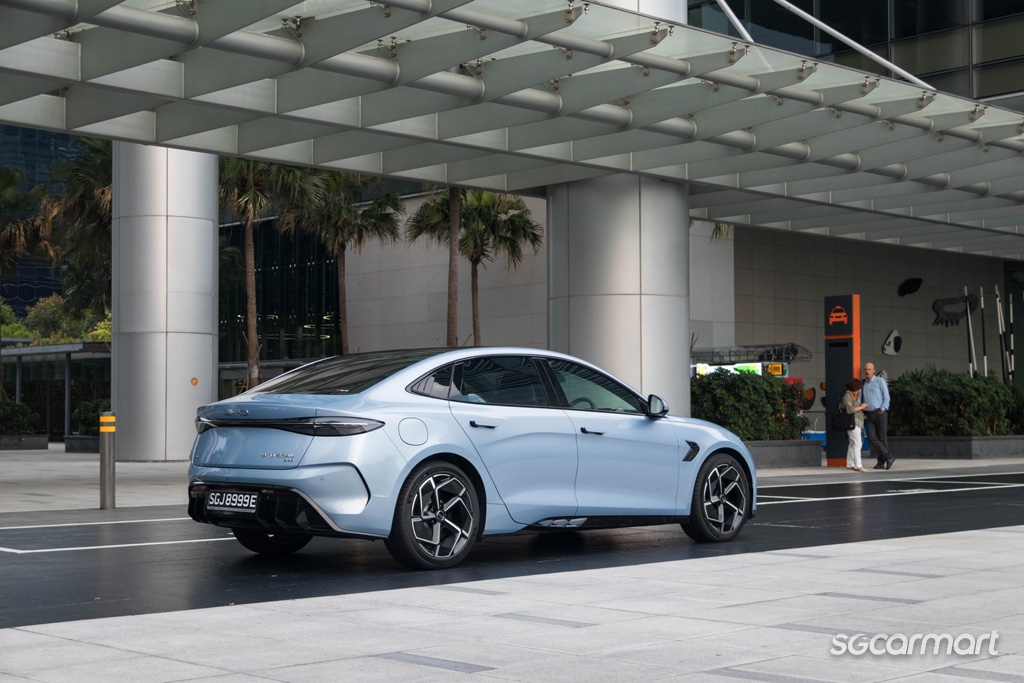BYD Seal Performance 82.6 kWh Review
31 Oct 2023|33,415 views
What We Like
Incredible straight-line performance
Stable and agile cornering
Well-built interior with plenty of features
Excellent insulation, along with a composed ride
Sleek, striking good looks
A reasonable price point for all that it offers
What We Dislike
Lacking in steering feedback
Functions and controls buried within touchscreen system can be difficult to access while driving
BYD has come a long way, and it is clear to see from the cars it offers. I remember reading about its F3DM - launched back in 2008, it was the world's first production plug-in hybrid. While it was equipped with a lithium iron phosphate battery, which can be considered the precursor to BYD's current Blade Battery technology, the F3DM was a car with styling heavily borrowed from other cars.
When you look at BYD's current range of cars, you'll have to be impressed by just how far the company has grown. Gone are the heavily inspired designs, and in place, are sleek EVs - such as the Seal I am driving today - and cutting-edge engineering in battery, chassis and various parts that make up these cars.
I'll have to admit, though, having sat in the earlier Chinese-built cars that were available in the 2000s, I don't really have the best impression of them. But the Seal's looking rather promising, so I'm going to cast away all prejudice and experience what it has to offer.
Cast away that cute image of a fluffy seal - this one's sleek and pretty
Cue the word Seal, and imagery of the cute marine mammal immediately fills my head - *boop*. But BYD's Seal isn't exactly that - the cute one in the lineup is the Dolphin hatchback. Instead of the cutie that you are expecting, the BYD Seal is a sleek and stylish executive sedan.
While its silhouette is reminiscent of one of its biggest competitors, the Tesla Model 3, the Seal manages to be distinct and stands out from the sea of EVs in the market. With the Seal, its familiar four-door coupe shape is pinched at the front to create a sharp and striking face, a face that is completed by what BYD calls an X-shaped front end - likely due to the searing shape of its head lights, and the daytime running lights located on the bumper (I can kind of make out the 'X' when I'm looking head on at the car).
On its side, a characteristic shoulder line starts from the front, connecting its face to the dot-matrix taillight that spans the entire width of the car, and along the way, it also manages to accentuate the wide rear arches to complete the sculpted body of the Seal. And it isn't just that - the doors on the Seal aren't simple, unimaginative flat pieces of stamped metal either. There is an accent line just below the door handles, working in conjunction with the crease on the lower part to result in a car that looks like it is going fast even when sitting still.
It goes from 0 to 100 really, really quick!
If its sporty design doesn't already convince you that this is a performance car, the 3.8S badge (denoting the car's century sprint timing) should. But just to make sure you get the idea, the BYD Seal Performance is a dual-motor EV that puts out 523bhp and 670Nm to all four wheels - that's more power than an AMG C63 S!
However, these days, considering how electric motors can put out plenty of power, one can say that power is rather easy to come by, and that has indeed made the notion of a powerful car slightly less impressive. But, the BYD Seal surprises on other fronts apart from power.
There's no denying the hefty weight of a powerful EV such as this - it has a kerb weight of 2,185kg - hence, when cornering hard or making quick directional changes, the weight transfer is prominent. But that shouldn't be confused with body roll, as it is very well controlled on the Seal. I'm pretty sure the engineers' effort in designing the front double wishbone and rear multi-link suspension, as well as the extremely rigid platform with BYD's Cell-to-Body technology, has something to do with it. The thoughtful engineering has resulted in excellent handling prowess - despite the steering being largely devoid of feedback, the car is agile, stable and incredibly capable.
More impressively, even if you try to ignore physics and mash the accelerator while in the midst of a right-angled turn, the Seal's intelligent Torque Adaptation Control torque vectoring system will put the massive power down with minimal fuss. Even at the limit of grip, the drive remains neutral and controllable without excessive under or over steer.
The great looks continue inside
Although I wasn't impressed by the affordable Dolphin's interior build quality and material choices when I drove it awhile back, the Seal's interior is worlds apart. It surprises with quality and refinement - most surfaces are covered in plush, quality leather and suede; switch gear and the plastic panels seem well put-together and feel good to the touch.
BYD's signature rotating touchscreen can be found in the Seal, and it is packed with features, including Apple CarPlay and wireless Android Auto
And as we've come to expect from BYD, these cars are very well equipped. The 15.6-inch rotating infotainment touchscreen is one of the largest in the market, and it is responsive and easy to use - Android users should find the interface familiar. There's also wired Apple CarPlay and wireless Android Auto connectivity, though I did have a moment where Android Auto kept cutting out (it could very well be my phone's fault), but other than that little hiccup, the system works amazingly on the large display.
Most of the car's settings and controls are navigated through the same large display, and this includes the air-con vents adjustment - there aren't any physical tabs for you to adjust them, but it comes with a handy 'swing' function to ensure comprehensive air-con coverage. But this design decision is both a boon and a bane. On one hand, it permits the clutter-free centre console design - they even managed to fit two wireless charger. On the other, some settings can be a pain to get to while driving. The hassle is compounded when you are using Android Auto or Apple CarPlay as it's rather troublesome to get back to the home page in order to access the other functions.
The plush genuine leather seats and spacious interior ensure an enjoyable ride in the Seal Performance
As a passenger in the Seal Performance, you wouldn't have much to complain about. The seats are comfortable and the front ones are ventilated as well, and the cabin is well insulated, resulting in a serene environment where you can truly enjoy the clear notes by the premium Dynaudio sound system. While the suspension is slightly on the stiffer side (this is a performance model after all), ride quality is composed - as long as your driver isn't trying to clock the 3.8 seconds century sprint figure all the time…
The BYD Seal Performance offers astounding performance, be it in a straight line or dealing with the curves and challenges of a race track. It is also has a feature-packed cabin, along with a full suite of driving assists - including Adaptive Cruise Control, Lane Keeping Assist, Lane Departure Warning and Prevention, Front and Rear Cross Traffic Alert, to ensure a comfortable journey, be it as a passenger, or the driver.
It is clear that BYD is no longer just another budget car manufacturer, and the Seal is the best case for this. And even more than that, the brand also isn't just an innovative battery manufacturer (though its Blade Battery tends to steal the limelight).
With the Seal, BYD proves itself to be a top-tier manufacturer that is able to deliver a quality EV, a complete package that can go toe to toe with the products from legacy car makers and outshine most of them. While the Seal already had me with its sharp looks, I am sold after experiencing it over these couple of days. At its price point, it is also the EV that offers the cheapest horsepower, so if I am in the market for an EV and have $286,888 sitting around, you know what car I'll be getting.
Are you in the market for an EV? Here are some others that you might consider:
What We Like
Incredible straight-line performance
Stable and agile cornering
Well-built interior with plenty of features
Excellent insulation, along with a composed ride
Sleek, striking good looks
A reasonable price point for all that it offers
What We Dislike
Lacking in steering feedback
Functions and controls buried within touchscreen system can be difficult to access while driving
BYD has come a long way, and it is clear to see from the cars it offers. I remember reading about its F3DM - launched back in 2008, it was the world's first production plug-in hybrid. While it was equipped with a lithium iron phosphate battery, which can be considered the precursor to BYD's current Blade Battery technology, the F3DM was a car with styling heavily borrowed from other cars.
When you look at BYD's current range of cars, you'll have to be impressed by just how far the company has grown. Gone are the heavily inspired designs, and in place, are sleek EVs - such as the Seal I am driving today - and cutting-edge engineering in battery, chassis and various parts that make up these cars.
I'll have to admit, though, having sat in the earlier Chinese-built cars that were available in the 2000s, I don't really have the best impression of them. But the Seal's looking rather promising, so I'm going to cast away all prejudice and experience what it has to offer.
Cast away that cute image of a fluffy seal - this one's sleek and pretty
Cue the word Seal, and imagery of the cute marine mammal immediately fills my head - *boop*. But BYD's Seal isn't exactly that - the cute one in the lineup is the Dolphin hatchback. Instead of the cutie that you are expecting, the BYD Seal is a sleek and stylish executive sedan.
While its silhouette is reminiscent of one of its biggest competitors, the Tesla Model 3, the Seal manages to be distinct and stands out from the sea of EVs in the market. With the Seal, its familiar four-door coupe shape is pinched at the front to create a sharp and striking face, a face that is completed by what BYD calls an X-shaped front end - likely due to the searing shape of its head lights, and the daytime running lights located on the bumper (I can kind of make out the 'X' when I'm looking head on at the car).
On its side, a characteristic shoulder line starts from the front, connecting its face to the dot-matrix taillight that spans the entire width of the car, and along the way, it also manages to accentuate the wide rear arches to complete the sculpted body of the Seal. And it isn't just that - the doors on the Seal aren't simple, unimaginative flat pieces of stamped metal either. There is an accent line just below the door handles, working in conjunction with the crease on the lower part to result in a car that looks like it is going fast even when sitting still.
It goes from 0 to 100 really, really quick!
If its sporty design doesn't already convince you that this is a performance car, the 3.8S badge (denoting the car's century sprint timing) should. But just to make sure you get the idea, the BYD Seal Performance is a dual-motor EV that puts out 523bhp and 670Nm to all four wheels - that's more power than an AMG C63 S!
However, these days, considering how electric motors can put out plenty of power, one can say that power is rather easy to come by, and that has indeed made the notion of a powerful car slightly less impressive. But, the BYD Seal surprises on other fronts apart from power.
There's no denying the hefty weight of a powerful EV such as this - it has a kerb weight of 2,185kg - hence, when cornering hard or making quick directional changes, the weight transfer is prominent. But that shouldn't be confused with body roll, as it is very well controlled on the Seal. I'm pretty sure the engineers' effort in designing the front double wishbone and rear multi-link suspension, as well as the extremely rigid platform with BYD's Cell-to-Body technology, has something to do with it. The thoughtful engineering has resulted in excellent handling prowess - despite the steering being largely devoid of feedback, the car is agile, stable and incredibly capable.
More impressively, even if you try to ignore physics and mash the accelerator while in the midst of a right-angled turn, the Seal's intelligent Torque Adaptation Control torque vectoring system will put the massive power down with minimal fuss. Even at the limit of grip, the drive remains neutral and controllable without excessive under or over steer.
The great looks continue inside
Although I wasn't impressed by the affordable Dolphin's interior build quality and material choices when I drove it awhile back, the Seal's interior is worlds apart. It surprises with quality and refinement - most surfaces are covered in plush, quality leather and suede; switch gear and the plastic panels seem well put-together and feel good to the touch.
BYD's signature rotating touchscreen can be found in the Seal, and it is packed with features, including Apple CarPlay and wireless Android Auto
And as we've come to expect from BYD, these cars are very well equipped. The 15.6-inch rotating infotainment touchscreen is one of the largest in the market, and it is responsive and easy to use - Android users should find the interface familiar. There's also wired Apple CarPlay and wireless Android Auto connectivity, though I did have a moment where Android Auto kept cutting out (it could very well be my phone's fault), but other than that little hiccup, the system works amazingly on the large display.
Most of the car's settings and controls are navigated through the same large display, and this includes the air-con vents adjustment - there aren't any physical tabs for you to adjust them, but it comes with a handy 'swing' function to ensure comprehensive air-con coverage. But this design decision is both a boon and a bane. On one hand, it permits the clutter-free centre console design - they even managed to fit two wireless charger. On the other, some settings can be a pain to get to while driving. The hassle is compounded when you are using Android Auto or Apple CarPlay as it's rather troublesome to get back to the home page in order to access the other functions.
The plush genuine leather seats and spacious interior ensure an enjoyable ride in the Seal Performance
As a passenger in the Seal Performance, you wouldn't have much to complain about. The seats are comfortable and the front ones are ventilated as well, and the cabin is well insulated, resulting in a serene environment where you can truly enjoy the clear notes by the premium Dynaudio sound system. While the suspension is slightly on the stiffer side (this is a performance model after all), ride quality is composed - as long as your driver isn't trying to clock the 3.8 seconds century sprint figure all the time…
The BYD Seal Performance offers astounding performance, be it in a straight line or dealing with the curves and challenges of a race track. It is also has a feature-packed cabin, along with a full suite of driving assists - including Adaptive Cruise Control, Lane Keeping Assist, Lane Departure Warning and Prevention, Front and Rear Cross Traffic Alert, to ensure a comfortable journey, be it as a passenger, or the driver.
It is clear that BYD is no longer just another budget car manufacturer, and the Seal is the best case for this. And even more than that, the brand also isn't just an innovative battery manufacturer (though its Blade Battery tends to steal the limelight).
With the Seal, BYD proves itself to be a top-tier manufacturer that is able to deliver a quality EV, a complete package that can go toe to toe with the products from legacy car makers and outshine most of them. While the Seal already had me with its sharp looks, I am sold after experiencing it over these couple of days. At its price point, it is also the EV that offers the cheapest horsepower, so if I am in the market for an EV and have $286,888 sitting around, you know what car I'll be getting.
Are you in the market for an EV? Here are some others that you might consider:
Car Information
BYD Seal Electric Performance 82.6 kWh (A)
$238,888
CAT B|Electric|5.5km/kWh
Horsepower
390kW (523 bhp)
Torque
670 Nm
Acceleration
3.8sec (0-100km /hr)
Promotion
BYD 100 HOUR SALES MARATHON
Read moreThank You For Your Subscription.
- Exterior Styling
- Performance And Handling
- Cabin And Features
- Conclusion














































































